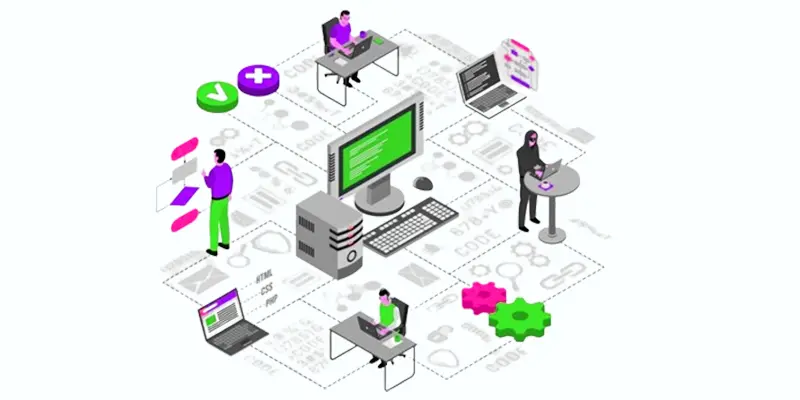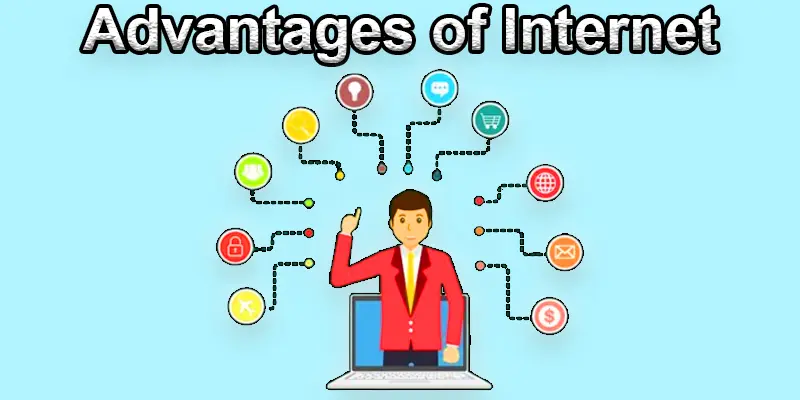What is Computer System Software? Types, Uses, Pros and Cons
Published: 1 Sep 2024
What is System Software?
System software is a type of computer program that keeps your computer’s hardware functioning as a whole. It acts like a bridge between the hardware (like your keyboard and screen) and the applications (like your games and web browser), making sure they all function properly.
Examples System Software
Common Examples of system software like:
- Operating System (OS): The OS, such as Linux, macOS, and Windows, manages every aspect of your computer.
- Device Drivers: Helps your computer talk to hardware, like printers and graphic cards.
- Utilities: Tools that maintain and protect your computer, such as antivirus and disk cleaners.
- Firmware: Embedded software that starts up your computer and manages hardware settings.
Uses of System Software
- Running Programs: System software helps your computer run other software, like games or web browsers, by managing the resources they need to work properly.
- Managing Hardware: It controls and coordinates all the parts of your computer, like the CPU, memory, and storage, so they work together efficiently.
- Providing Security: System software consists of utilities that safeguard your data by shielding your computer from viruses and other dangers.
- Updating the System: It regularly updates your computer’s software, fixing bugs, and adding new features to keep everything running smoothly.
- Starting the Computer: When you turn on your computer, system software boots up the system, loading the operating system and getting everything ready for you to use.

Advantages of System Software
- Makes Your Computer Easy to Use: System software, like the operating system, provides a user-friendly interface that makes it simple to interact with your computer.
- Keeps Everything Working Together: It ensures all parts of your computer, from hardware to applications, work smoothly together without issues.
- Protects Your Computer: System software has security safeguards that guard your data and shield your computer from malware, viruses, and other dangers.
- Improves Performance: By efficiently managing resources like memory and processing power, system software helps your computer run faster and more efficiently.
- Automates Updates: System software automatically updates itself and other programs, ensuring your computer always has the latest features and security improvements.
Disadvantages of System Software
- Can Be Expensive: Some system software, like certain operating systems or security tools, can be costly, especially if you need to buy licenses for multiple devices.
- May Require Regular Updates: System software often needs frequent updates, which can take time and sometimes cause interruptions or compatibility issues with other software.
- Can Be Complex: Advanced system software may have complicated settings and features, making it challenging for beginners to understand and use effectively.
- Uses System Resources: System software requires a portion of your computer’s resources, like memory and processing power, which can sometimes slow down your system or limit the performance of other applications.
- Potential for Bugs and Issues: Like any software, system software can have bugs or issues that may cause problems or require troubleshooting, which can be frustrating and time-consuming.
Important Features of System Software
- User Interface: System software provides a user-friendly interface, such as a desktop or start menu, that lets you easily interact with your computer and run programs.
- Resource Management: It manages your computer’s resources, like memory and CPU, ensuring that all programs and hardware components work efficiently together.
- Hardware Control: System software includes drivers and tools that help your computer communicate with and control hardware devices, like printers, keyboards, and mice.
- Security Features: It has built-in security measures to protect your computer from viruses, malware, and unauthorized access, keeping your data safe.
- System Updates: System software regularly updates itself and other components to fix problems, improve performance, and add new features, ensuring your computer stays up-to-date.
What does an operating system do?
Your computer’s hardware and software are all managed by the operating system (OS), which also offers a convenient user interface. It coordinates tasks, runs applications, handles file storage, and ensures that all parts of your computer work together smoothly.

Modes of Operating System
- Single-User Mode: This mode is for one person using the computer at a time. It’s commonly used on personal computers, where only one user is logged in and using the system.
- Multi-User Mode: Several people can access and use the computer at once in this manner. It’s used in servers and mainframes where several people can work on the system at once.
- Batch Mode: In this mode, the operating system executes a series of tasks or commands automatically, without user interaction. It’s useful for running repetitive tasks or processing large amounts of data.
- Interactive Mode: This mode lets users interact directly with the operating system or applications in real-time. You can input commands and get immediate feedback, like when using a command line or graphical user interface.
- Real-Time Mode: This mode ensures that tasks are processed within a strict time limit. It’s used in systems where timely responses are critical, like in medical devices or industrial control systems.
Why use system software?
We use system software because it helps manage and control our computer’s hardware and software, making everything work together smoothly. It provides a user-friendly interface, ensures that programs run correctly, keeps our data safe, and handles essential tasks like updating and managing files. Without system software, using a computer would be much more difficult and less efficient.
Important Issuse of Operating System
- Compatibility Problems: System software might not work well with all hardware or other software, leading to issues where devices or programs don’t function correctly together.
- Security Vulnerabilities: System software can have weaknesses that hackers might exploit, potentially leading to data breaches or other security issues.
- Performance Issues: Sometimes, system software can use up too many resources or become sluggish, which can slow down your computer and affect overall performance.
- Update Challenges: Regular updates are necessary for fixing bugs and improving features, but they can sometimes cause new problems or conflicts with existing software.
- Complexity: Advanced system software can be difficult to understand and use, which might make troubleshooting or configuring settings challenging for non-experts.
Operating System for Personal Computers
- Windows: Windows, the most widely used operating system for personal computers, was created by Microsoft. It supports a large variety of devices and applications and is easy to use.
- macOS: macOS, developed by Apple, is utilized by Mac computers. It integrates with other Apple products flawlessly and is renowned for its simple design and ease of usage.
- Linux: Linux is an open-source operating system that may be tailored to meet various requirements. It’s free to use and popular among tech enthusiasts and developers.
- Chrome OS: Developed by Google, Chrome OS is designed for Chromebooks. It’s lightweight and relies heavily on web-based applications and cloud storage.
- Windows S Mode: A version of Windows 10, S Mode is designed for security and performance. It has Microsoft Edge as the default browser and only accepts apps from the Microsoft Store.
Conclusion about System Software
The crucial software that facilitates the seamless operation of your computer’s hardware and software is called system software. It includes things like the operating system, which manages everything on your computer, and other tools that control hardware and keep your system secure. Without system software, your computer wouldn’t be able to run applications or function properly.
FAQS (Frequently Asked Questions) What is system software
Which system software examples are there?
System software includes programs like antivirus software, device drivers (which allow hardware like printers to work with your computer), and operating systems like Windows, macOS, and Linux.
How does system software help manage computer resources?
System software manages computer resources like memory, processing power, and storage. It ensures that each program gets the resources it needs and that they don’t interfere with one another.
How do operating systems interact with hardware devices?
Operating systems use device drivers to communicate with hardware devices. These drivers act as translators, allowing the operating system to send instructions to hardware like printers, keyboards, and monitors.
What is software in software engineering?
The term “software” in software engineering describes the apps and programs that operate on computers and other devices. It covers everything, from operating systems to applications designed for particular purposes.
What is computer system software?
The fundamental software that oversees and regulates computer hardware and offers an environment in which to run applications is known as computer system software. It includes the operating system and other essential programs.
Explain 5 types of system software:
- Operating Systems: Manage all hardware and software on the computer (e.g., Windows, macOS).
- Device Drivers: Help the operating system communicate with hardware devices (e.g., printer drivers).
- Utilities: Use disk cleansing tools and antivirus software to do maintenance duties.
- Firmware: Low-level software that runs the computer’s basic operations and is incorporated into hardware, such as the BIOS.
- System Management Software: Tools used for managing and monitoring system performance and resources (e.g., system monitors and diagnostic tools).

- Be Respectful
- Stay Relevant
- Stay Positive
- True Feedback
- Encourage Discussion
- Avoid Spamming
- No Fake News
- Don't Copy-Paste
- No Personal Attacks

- Be Respectful
- Stay Relevant
- Stay Positive
- True Feedback
- Encourage Discussion
- Avoid Spamming
- No Fake News
- Don't Copy-Paste
- No Personal Attacks





